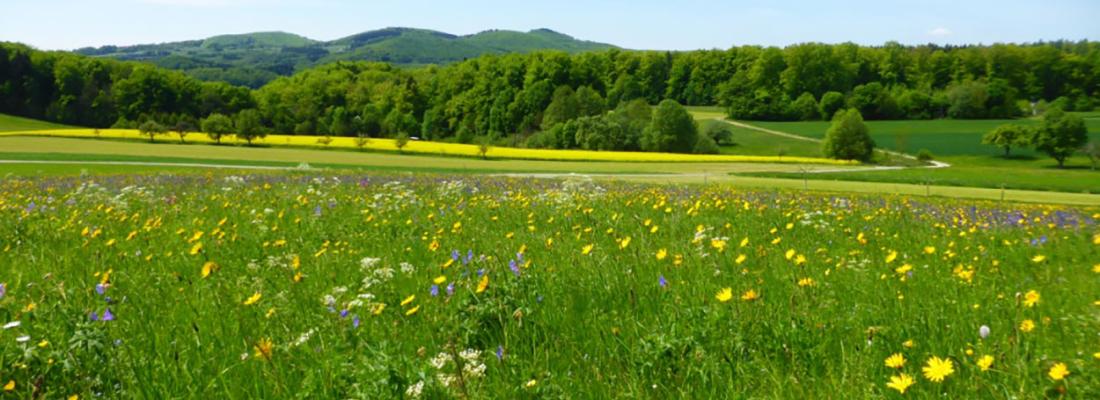Agroecology Reading time 2 min
Grassland plant diversity benefits wildlife, agriculture, and tourism
Published on 15 November 2022

While it is now well established that plant-rich grasslands provide habitats for bees and other insects, promoting pollination and pest control, other less studied ecosystem services can also be improved as a result of this diversity: soil quality, carbon sequestration, etc. In addition, biodiversity can increase the aesthetic value of the area, which plays a crucial role in tourism and recreation activities. To gain a better understanding of the impact of plant diversity on a variety of ecosystem services, INRAE and the Senckenberg Biodiversity and Climate Research Centre conducted a long-term study within agricultural grasslands in different regions throughout Germany.
Researchers analysed data collected between 2006 and 2018 from 150 agricultural grassland plots in the Swabian Jura region in southern Germany, the Hainich-Dün region in central Germany, and the Schorfheide-Chorin Biosphere Reserve north of Berlin. These sites present various climates and topography, representative of the different types of grassland found in Central Europe. The team considered 16 different ecosystem services, ranging from forage quality, pollination, carbon storage and groundwater recharge, to the so-called "cultural services," related to our relationship with nature and the way we experience it. For example, they took into consideration diversity in acoustic stimuli—bird songs and other nature sounds—and the presence of flowering meadows in agricultural landscapes, which have been found to have positive psychological effects on human beings.
Biodiversity for all local stakeholders
In addition to establishing that high plant diversity has positive effects on a large number of ecosystem services, the research team decided to examine the importance of various ecosystem services for different local stakeholders, an analysis that had never been done before at a global scale. In collaboration with the Institute for Social-Ecological Research (ISOE) in Frankfurt, the researchers surveyed 321 people, including local residents and representatives from nature conservation associations, and the agricultural and tourism sectors. As a result, they were able to demonstrate that a high level of biodiversity in grasslands was beneficial to all groups of stakeholders surveyed.
Biodiverse surroundings benefit grassland biodiversity and help preserve ecosystem services
The impact of plant diversity at the scale of small grassland plots was not the only focus of the study, which also considered the dynamics of biodiversity at larger spatial scales. Researchers found that plant diversity in the surrounding areas affects the ecosystem services within the grassland plots. This fact is crucial for local decision-makers, as policy decisions regarding land management are made at a large geographical scale. The data analysed show that high plant diversity at different spatial scales offers benefits to entire rural communities, affecting different types of local actors. These findings can be used to develop land management measures aimed at preserving ecosystems and the services they provide.
Reference
Le Provost G. et al. The supply of multiple ecosystem services requires biodiversity across spatial scales. Nature Ecology & Evolution 2022, DOI : www.doi.org/10.1038/s41559-022-01918-5
